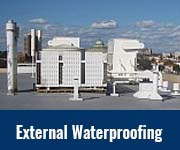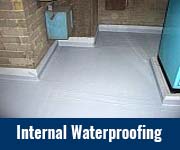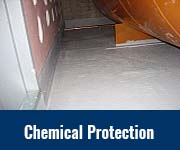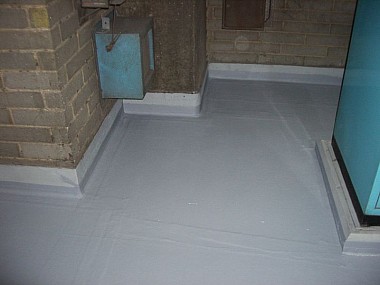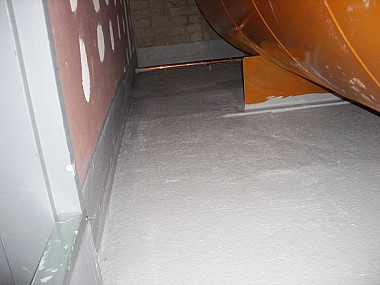Engineers and maintenance crew are regularly working in Plant Rooms where spillages and rubble can accumulate. When the surface fails and leaks to the level below it can be unpleasant. Liquid applied membranes with reinforcing for heavy traffic are ideal to provide the protection required. The following information is designed for practical advice in three situations:
EXTERNAL WATERPROOFING
Usually located on the roof sections of buildings, these areas have many penetrations to cater for plumbing pipes, stand fixtures and ventilation exits. On most occasions the process is simple but slow due to the detailing work and lack of broad area coverage. Sometimes the condition of the concrete is poor and a screed coverage is required prior to waterproofing. Start by securing all penetrations, pipes and exit points with polyurethane. Then secure all wall / floor joints, plus other penetrations by applying polyurethane to the corners (bond breaker), painting the membrane over the area, while wet, install polycloth over joint, coating again with membrane. Once dry apply the first coats of membrane embedded with fibreglass matting over the entire surface. Finishing with a final coat of membrane.
Key Products:
- Sikaflex PRO – Polyurethane
- Polycloth – reinforcing fabric
- Fibreglass Matting
- MICROL – Heavy Duty Waterproofing Membrane
- Sika-tite WPU 2019
- Sikalastic-488-au-pds
Reference Information:
INTERNAL WATERPROOFING
Internal Plant Rooms tend to have much higher traffic and don’t get washed down or cleaned regularly. After initial cleaning, we usually recommend a primer be applied to the floor. Plant Rooms have many penetrations to cater for plumbing pipes, stand fixtures and ventilation exits. On most occasions the process is simple but slow due to the detailing work and lack of broad area coverage. Sometimes the condition of the concrete is poor and a screed coverage is required prior to waterproofing. Start by securing all penetrations, pipes and exit points with polyurethane. Then secure all wall / floor joints, plus other penetrations by applying polyurethane to the corners (bond breaker), painting the membrane over the area, while wet, install polycloth over joint, coating again with membrane. Once dry apply the first coats of membrane embedded with fibreglass matting over the entire surface. Finishing with a final coat of membrane.
Key Products:
- Sikaflex PRO – Polyurethane
- Polycloth – reinforcing fabric
- Fibreglass Matting
- Microl Acrylic Primer
- MICROL – Heavy Duty Waterproofing Membrane
- Sikalastic-488-au-pds
- Sika-tite WPU 2019
Reference Information:
CHEMICAL PROTECTION
As with Internal Plant Rooms, Chemical zones require both waterproofing and then applying a chemically resistant coating.
Key Products:
- Sikaflex PRO – Polyurethane
- Polycloth – reinforcing fabric
- Fibreglass Matting
- MICROL – Heavy Duty Waterproofing Membrane
- sikafloor-160-pds
- Sikafloor-264T
- Sikafloor-H S
- Sikafloor31 Purcem_tds
- Sikafloor21 Purcem_tds
Reference Information:

